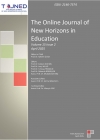TOJNED - Volume 1 - Issue 1 - January 2011
 Intelligence Studies In Higher Education. Designing An Intelligence Studies Curriculum For The Romanian Civilian Universities
Intelligence Studies In Higher Education. Designing An Intelligence Studies Curriculum For The Romanian Civilian Universities Claudia CRISTESCU
Abstract: As part of the wider doctoral research „Reforming the intelligence sector through academic education. Implications for the military higher education”, the paper focuses on the lack of intelligence education as a threat to the national security and also on the Intelligence – University nexus as a critical part of todays Knowledge Society and of the Bologna process to create the EHEA by making academic degree standards&quality assurance standards compatible throughout Europe. Firstly, we will examine the use of Open Source Intelligence OSINT in the academic field and its importance in designing Intelligence Studies curriculum for the Romanian Higher Education. Then, we will argument the need for Intelligence Studies as a new field of intellectual inquiry, scholarly debate and as an academic study program within the fundamental field of study "Political and Social Sciences”, based on the new context of the 21st century: the heightened role of intelligence in international affairs and in its influence upon political agenda setting, decision making and policy making; the preminence of intelligence and security issues in political discourse as well as at the level of public opinion. A key-issue of the paper is about the research and institutional efforts to be made in order to 1.describe the conceptual framework in which intelligence will be studied, considering that Intelligence Studies can support a considerable number of diverse subject areas, and can be accurately described as interdisciplinary; 2.identify the beneficiaries and the potential educational bidders; 3.validate the Intelligence Studies as a new qualification by the ACPART (National authority for establishing and regularly updating the national framework for higher education qualifications).
 DEALING WITH THE COMPLEXITIES OF INTEGRATION IN CULTURAL DIVERSE RURAL SCHOOL COMMUNITIES IN SOUTH AFRICA
DEALING WITH THE COMPLEXITIES OF INTEGRATION IN CULTURAL DIVERSE RURAL SCHOOL COMMUNITIES IN SOUTH AFRICA G Alexander
Abstract: In 1994 the new democratic government brought with it a desegregated national education system, that resulted in an influx of large numbers of black learners into formerly white schools, whether in urban or rural areas. These schools became thus the sites of cultural convergence-where diverse and previously divided cultures met for the first time, on supposedly common ground. According to Meier (2005), some of the black learners who were integrated into formerly white schools found it difficult to adjust to the new educational environment because they lacked the language skills and required background to deal with the curriculum content and medium of instruction (Afrikaans and/or English) whilst white educators, representing the majority of the staff complement (Kivedo, 2008), are often not motivated because they lack the cultural diverse teaching skills, the Africanisation of learning content and strategies in the management of overcrowding in classrooms. In concurrence with the latter, national and local media frequently report on aspects relating to cultural-diverse learning environments and how it coincides with numerous challenges (racial conflict amongst learners; cultural misunderstandings, negativity, confusion and low morale amongst educators) facing schools in rural communities. Despite efforts by the National Department of Education to integrate schools, the majority of black children in rural poor communities are receiving less than their right in a democratic South Africa (Nelson Mandela Foundation in Fox, Vos & Geldenhuys, 2007) and lags behind educational development in other parts of the country. With the above said in mind, the purpose of this mix method research study was to investigate the complexities associated with the integration of cultural diverse rural school communities in the Northern Cape province of South Africa and to propose recommendations for dealing with present and future challenges.
 Student Engagement In The Context Of Work Based Learning As An Unconventional Form Of Higher Education
Student Engagement In The Context Of Work Based Learning As An Unconventional Form Of Higher Education Irem Inceoglu, Natasha Shukla
Abstract: This particular paper is derived from a research project funded by Higher Education Academy (HEA) in the UK as an exploratory study. The research is concerned with the concept of student engagement in the context of Work-Based Learning (WBL) at Middlesex University. This paper draws attention to the distinction between WBL and more conventional university-based courses in relation to considering student engagement with the university. Our research showed that the literature on student engagement assumes in the most part that students are full-time undergraduates or graduates studying university-based programmes. Nevertheless, the fairly new field of WBL provides a focus of study outside the university in a work context which overrules these assumptions. This study aims to provide an understanding of the WBL students experience, identify any gaps that exist between current provision and expectations, and achieve indicators of good practice at institutional level to strengthen work based learners engagement.
 PRE-SERVICE BIOLOGY TEACHERS’ ATTITUDE, FEAR AND DISGUST TOWARD ANIMALS AND DIRECT EXPERIENCE OF LIVE ANIMALS
PRE-SERVICE BIOLOGY TEACHERS’ ATTITUDE, FEAR AND DISGUST TOWARD ANIMALS AND DIRECT EXPERIENCE OF LIVE ANIMALS Iztok Tomažič
Abstract: In 2006, the European Parliament published a framework of eight key competences for lifelong learning, each as “a combination of knowledge, skills and attitudes appropriate to the context”. Biology teaching in Slovenian schools is primarily knowledge-oriented, less concerned with developing skills, and largely negligent of attitude as a constituent component of competences. This paper presents a research of attitudes, fear and disgust that first- and final-year pre-service biology teachers have expressed toward 25 animals, in connection with direct experience of individual animal species. Students attitudes and emotions were assessed with a self-report questionnaire. Results show that final-year students on average rate their attitude higher (more positive) and fear and disgust lower (less negative) than their first-year counterparts. That applies mostly to animals which students encountered and worked with at biology didactics classes. Implications for biology education are discussed.
 Exploring Organizational Communication Through Website Analysis: A Problem-Based Learning Community Exercise
Exploring Organizational Communication Through Website Analysis: A Problem-Based Learning Community Exercise Valerie Priscilla Goby, Catherine Nickerson
Abstract: This paper discusses the pedagogic value of website analysis. It describes such an exercise administered to third-year business students at a major university in the United Arab Emirates, in which students were required to analyze a range of business school websites. The analysis was conducted employing four frameworks: (1) identification of concept clusters’ and the linguistic and navigational creation of these clusters; (2) framing of information provided to tap into students’ socio-cultural, intellectual, academic mindset; (3) the navigational mode by which meanings are created in the user’s mind based on the presentation and sequence of hyperlinks; (4) the Ashridge mission model of purpose, strategy, values, and behavior standards. The heuristic value of the exercise was very high since, on completion of the assignment, students demonstrated a firm understanding of how organizational realities are created through the management of information on websites, a corporate strategy which has enormous relevance for organizational development, CSR, corporate communications, and marketing.


